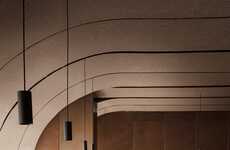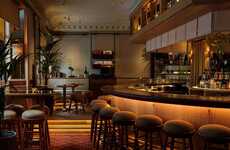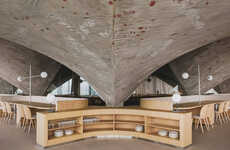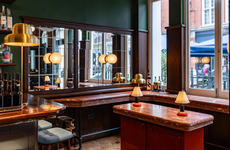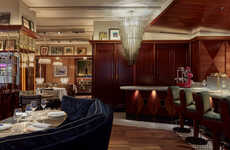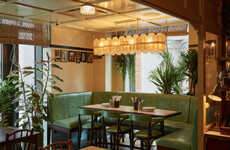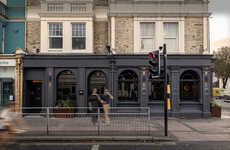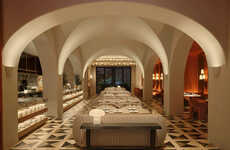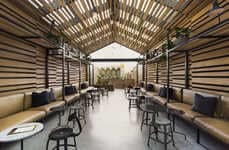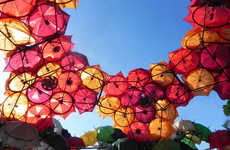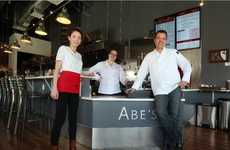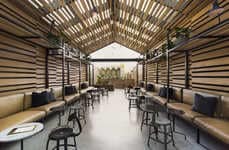
The Opso Restaurant Combines Greek and British Design
Vasiliki Marapas — July 25, 2014 — Art & Design
References: k-studio.gr & dezeen
Athens-based designers K-Studio designed OPSO, a Greek restaurant in London.
The designers opted for a fusion of Greek and British design elements for the restaurant, which is characterized by steel framework throughout. The studio explains, "The brief was to create a design that would reflect the overall philosophy of the restaurant: Greek inspired, London made." The steel spine runs the entire length of the restaurant, surrounding the Kavala marble counter top.
The counter acts as a coffee bar for the front of the building, where the floor is lower. Towards the back, a diing table is located and the ground is raised. The height gap allows for more efficient movement throughout the restaurant for the wait staff. The steel structure also contains the waiter's stations and food storage, as well as supports a series of wooden shelves that store condiments and plants in terracotta pots.
The designers opted for a fusion of Greek and British design elements for the restaurant, which is characterized by steel framework throughout. The studio explains, "The brief was to create a design that would reflect the overall philosophy of the restaurant: Greek inspired, London made." The steel spine runs the entire length of the restaurant, surrounding the Kavala marble counter top.
The counter acts as a coffee bar for the front of the building, where the floor is lower. Towards the back, a diing table is located and the ground is raised. The height gap allows for more efficient movement throughout the restaurant for the wait staff. The steel structure also contains the waiter's stations and food storage, as well as supports a series of wooden shelves that store condiments and plants in terracotta pots.
Trend Themes
1. Culturally Fused Design - Combining design elements from different cultures to create a unique aesthetic in various settings.
2. Functional Space Optimization - Optimizing the usage of space by incorporating multi-purpose elements to create a seamless experience.
3. Sustainability Through Material Choice - Using eco-friendly and locally-sourced materials to create functional and aesthetically pleasing designs.
Industry Implications
1. Restaurant Design - Designing restaurants that reflect the cuisine and culture of the establishment's country, while also incorporating local elements for a unique experience.
2. Hospitality - Incorporating culturally-inspired design elements into accommodations and common areas to create a memorable experience for guests.
3. Interior Design - Creating environments that merge cultural influences to reimagine traditional design elements and enhance the functionality of a space.
5
Score
Popularity
Activity
Freshness

